Return to Doñana
Doñana is one of Spain’s and indeed Europe’s most precious and beautiful protected areas. It’s a gem of wild forests, dunes, and wetlands, squeezed between the delta of the Guadalquivir River, a rare wild stretch of undeveloped Atlantic coastline, and the extensive lowland plains surrounding Huelva and Sevilla. A magical place, it was one that I hadn’t visited for several years – I yearned to return. When the opportunity of a bank holiday at the end of May presented itself, Gabi and I seized the moment and headed to Andalucía’s western fringe, to the land of the Iberian Lynx.
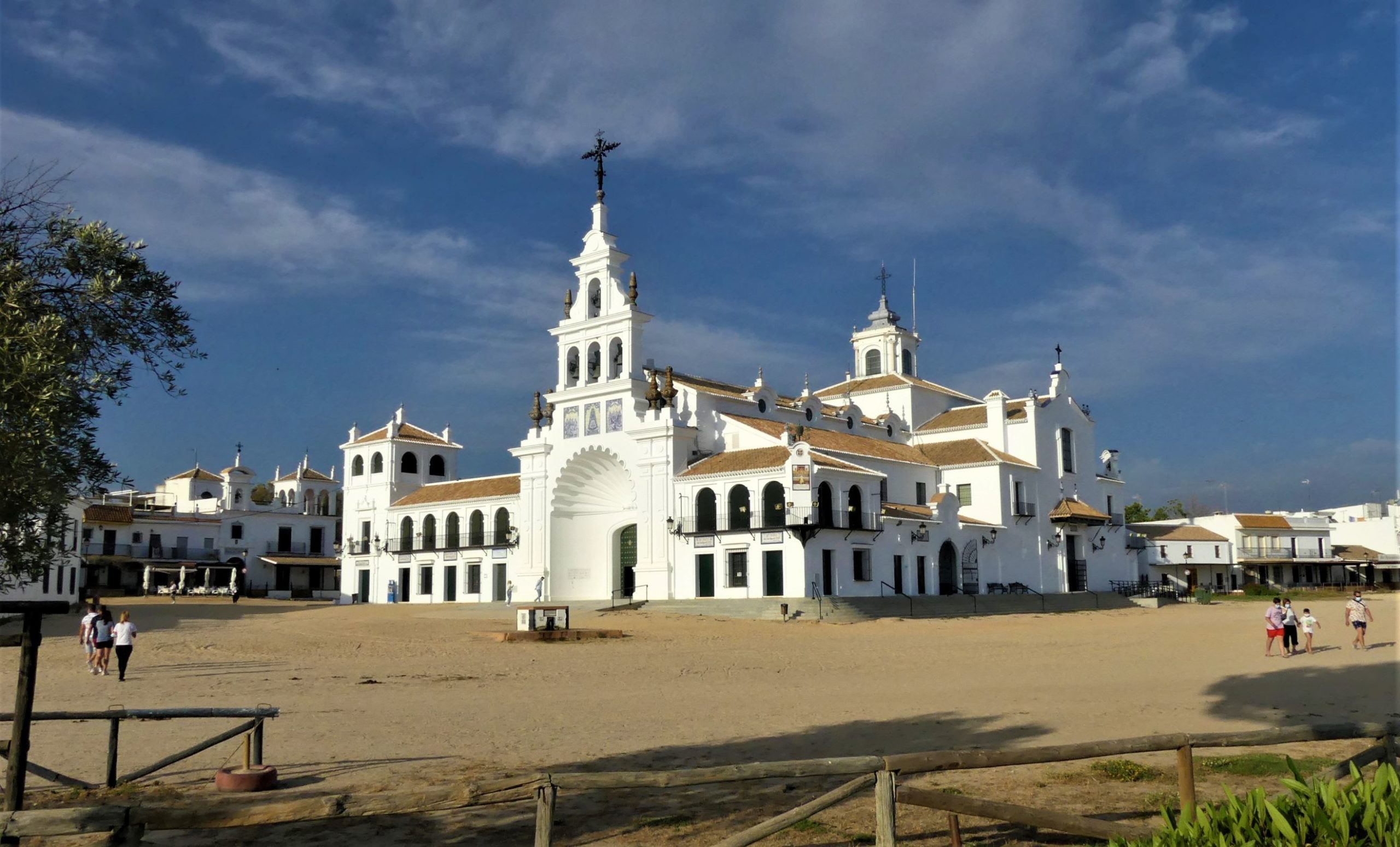
El Rocio – a horsy town
In the north of Doñana is El Rocίo, a picturesque village, famed for its annual pilgrimage, its dusty streets (none of the village’s streets are paved), and horse culture. It’s one of the few remaining places in Europe where the horse seems to be an equal (or even preferred) method of transport when compared to the car! The sandy windswept avenues, and elegant white-washed mansions set around the beautiful church, the Ermita de Nuestra Señora de El Rocίo, give the village a special ‘Spaghetti Western’ atmosphere.
A ‘ride in’ bar
The community is so ‘horsy’ you don’t even have to get off your ride to grab a drink in a bar. Many have elevated tables, so you can galop in and get your glass of tinto de verano, enjoying it while still in your saddle! A strangely wonderful concept. El Rocίo, with the comfortable campsite La Aldea at the entrance to the village, became our base for the next few days.
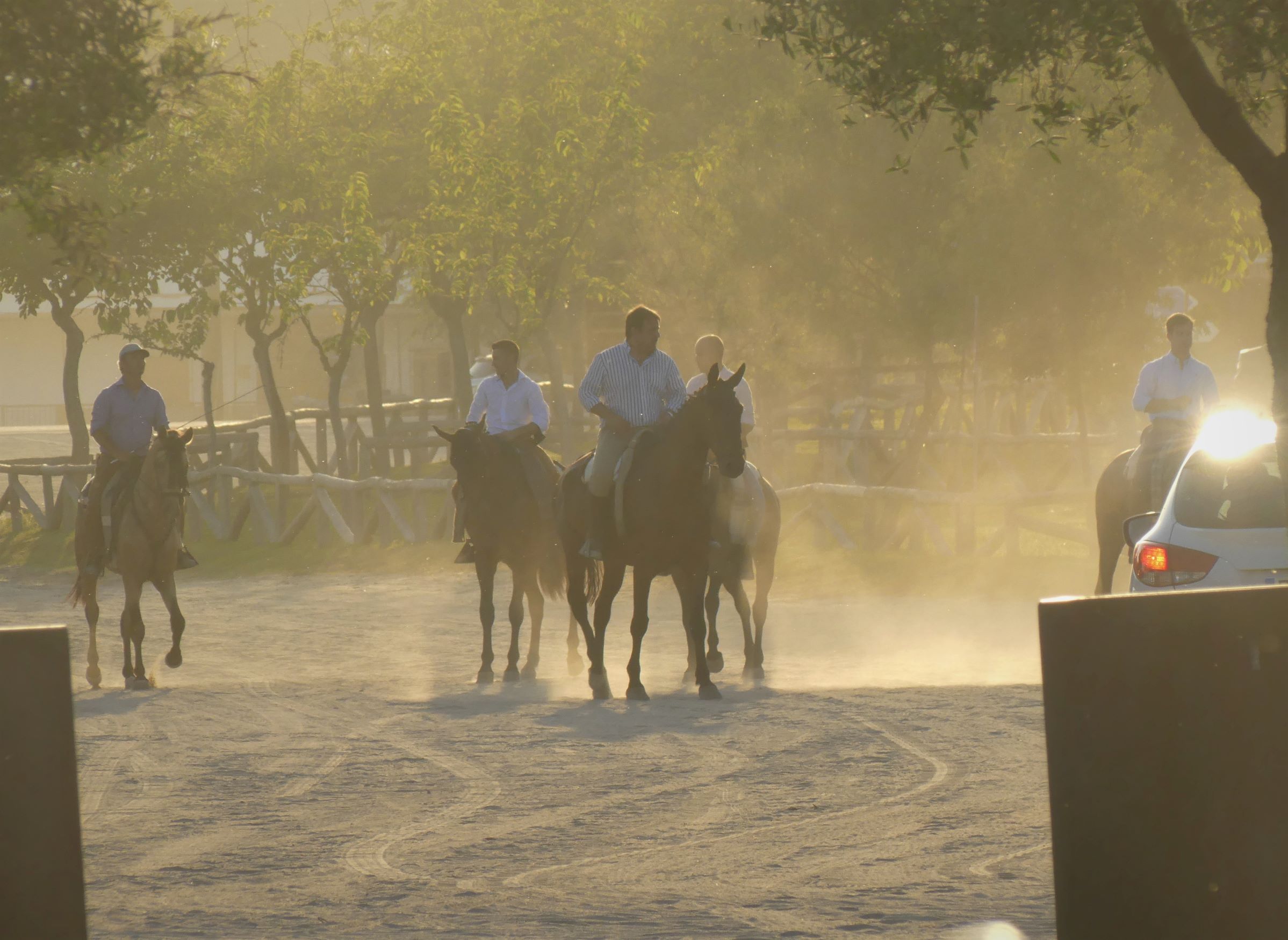
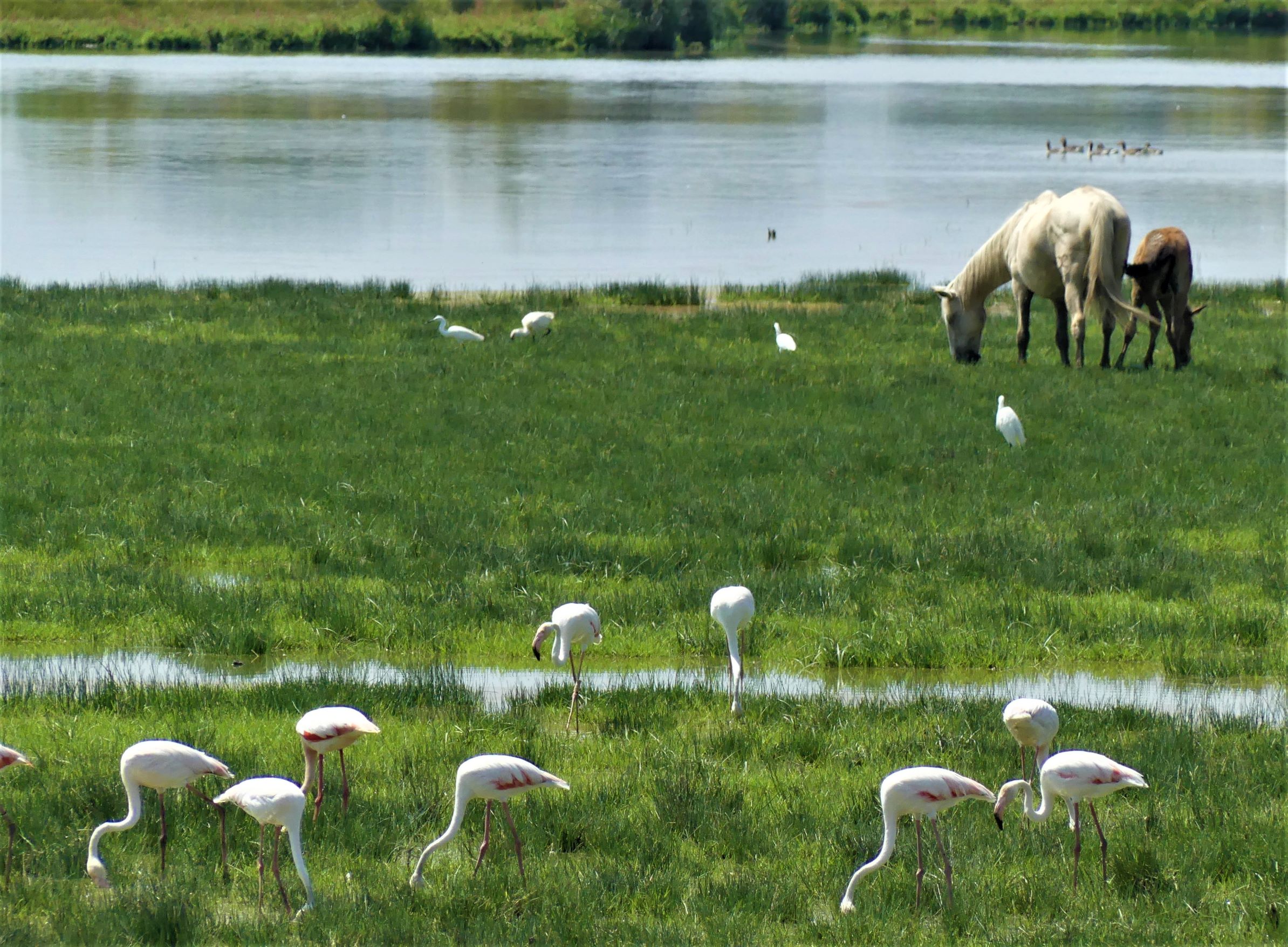
Birds of the Marismas
The village’s other major plus is its remarkable location overlooking the Marismas del Rocίo, a shallow lake and wetland area that plays host to an abundance of wildlife. Without leaving the plaza you can casually watch flocks of elegant flamingos feeding in the rich waters, unbothered by semi-wild horses wondering at will, while Ibises, spoonbills, egrets, and bee-eaters swirl around them. The huge nests of white storks occupy the crowns of electricity pylons, and black kites swoop for any chance of an evening meal, any small, reptile or mammal unfortunate enough to be caught off guard. It’s a great spot for an evening drink, and with so much nature all around, seriously, who needs television!
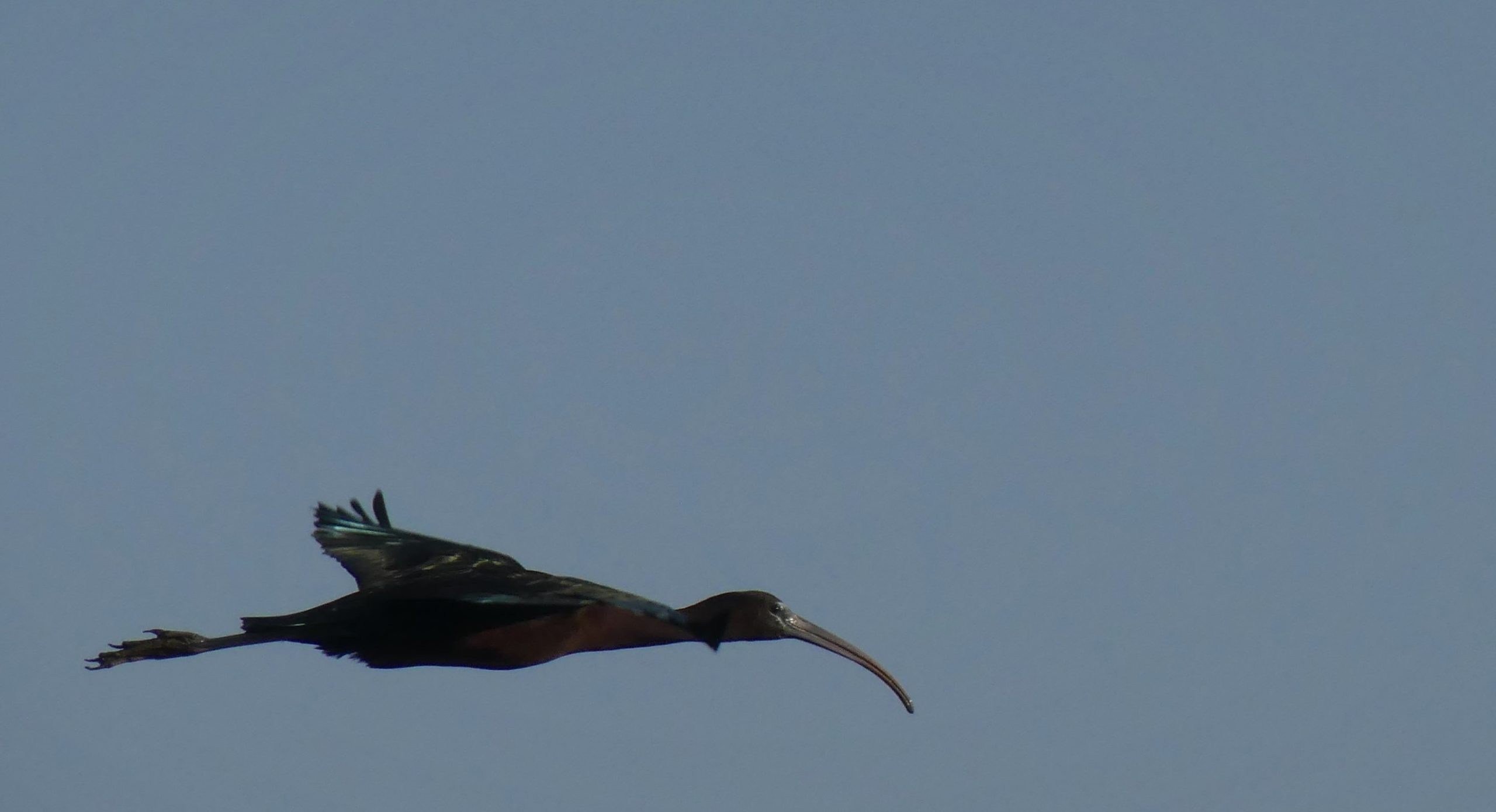

The wild coast
Except for the area around the resort town of Matalascañas, the coast here is among the least developed in Spain, with around 30km of coastline free of development of any kind. That first afternoon, after setting up the tent and grabbing a bit of lunch we headed for Playa Cuesta de Maneli in the park’s South-Western corner. Accessed from a wooden walkway winding through a system of vast ancient dunes to a beach that stretches away in either direction as far as the eye can see, it’s a gorgeous spot. At at the same time, the beach illustrated the immense threats facing one of Spain’s best protected natural areas (a UNESCO World Heritage Site), and our environment as a whole.
Fire and recovery
In 2017, a vast fire raged out of control here, testament to a rapidly changing climate that now swings more unpredictably between drought and intense flooding. Life has returned to the dunes, with wildflowers and herbs in abundance, but it’s unclear whether this habitat will entirely recover its previous biodiversity. The burnt trunks of trees, scattered about the landscape, are testament to changes occurring on a global scale.
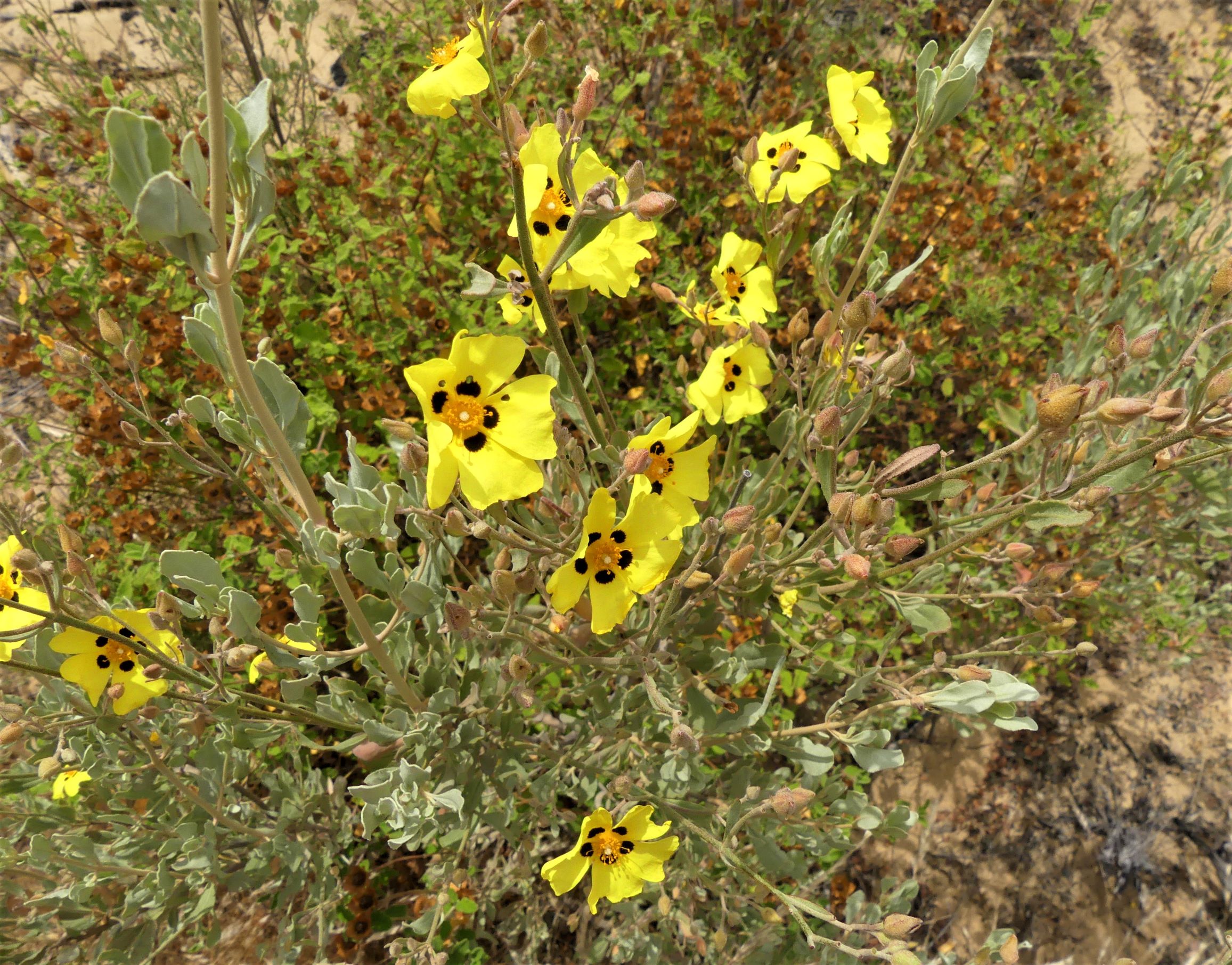
Bycatch?
Reaching the viewpoint above the beach, the view is magnificent, but a strange dark form, washed up in the beach’s centre, hinted at a wider sickness in the natural world. Upon investigation we discovered the body was that of a Common Dolphin, at maybe 1.5 metres in length, almost certainly a juvenile, decomposing in the golden sand. It was a tragic sight.
Was this creature killed as fishing ‘bycatch’, and tossed lifeless into the water? Did it meet it end consuming toxins and plastics that are common in even the most remote and highly protected parts of the world’s oceans? Or perhaps it died from entirely from ‘natural’ causes? We will never know. In theory, Doñona’s protected area extends 1km out to sea along this coastline, but for wide-ranging sea creatures like dolphins, this is almost irrelevant.
Protecting the seas
For the seas to recover from the devastation we are inflicting on them, we need to act on the vastly increased scale. We need to reduce pollution and create huge protected areas that allow marine species to recover, without the constant threat of overfishing and discarded nets and gear. Only then will animals such as the dolphin we encountered be truly secure.
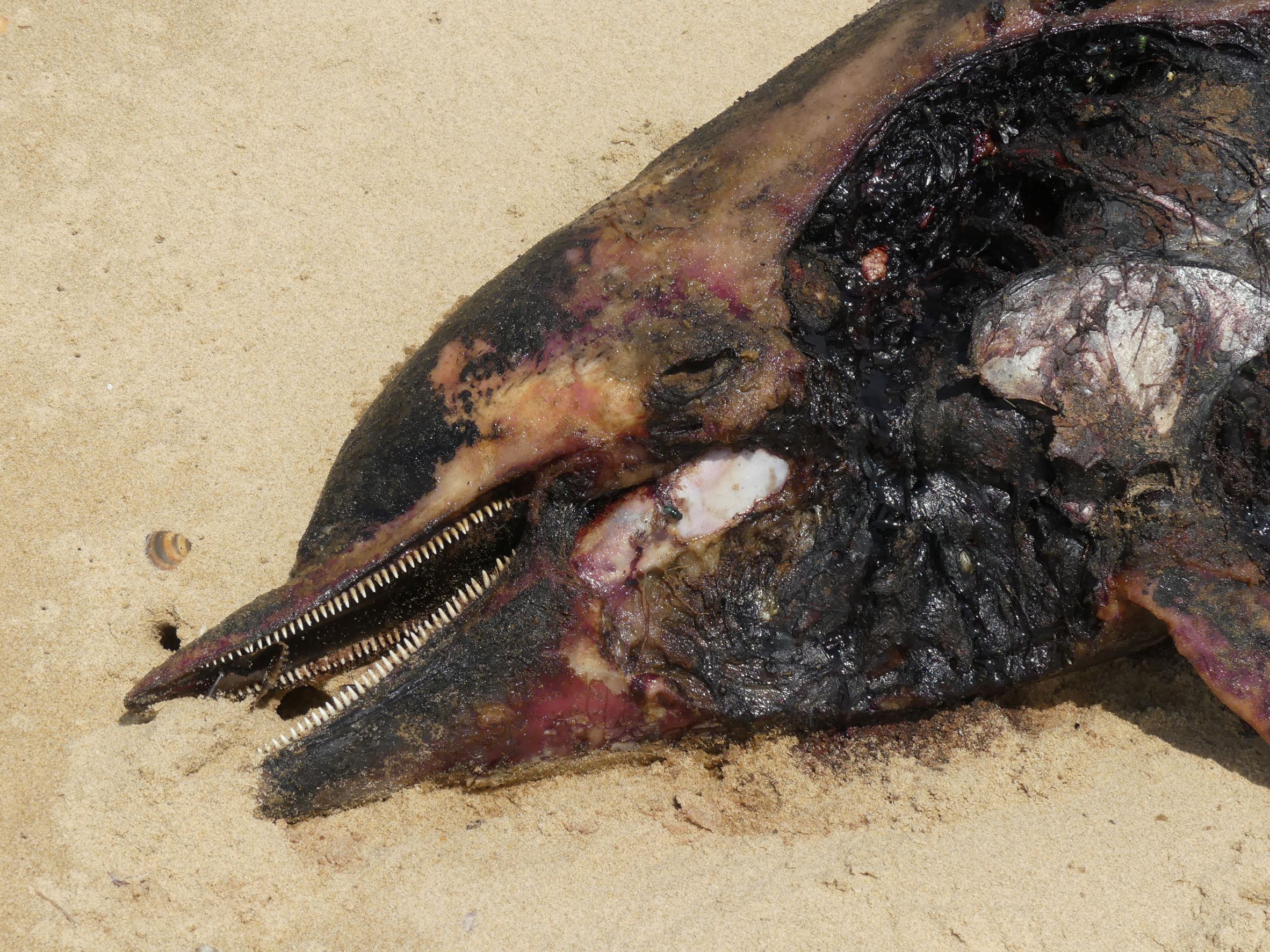
Washing away my cares
We later reported the dead dolphin to the park warden, but at the time there was nothing to be done, and we set off up the beach to find a deserted spot. For kilometres, the beach is backed only by cliffs of hardened sand, rich in layered shades of gold and brown. Along the cliffs, gulls, and the park’s ubiquitous black kites swoop and soar on the thermals. I tried to put the image of the dolphin out of my head, diving into the wonderfully warm Atlantic breakers, washing away my cares in this lovely spot. It’s a place to swim, watch the birds, doze in the sun, and put the cares of the world behind you. An energizing place.

The edge of extinction
The next morning, early we set out for the Centro Reception de Acebuche, where you can learn about one of Doñana’s greatest success stories, the breeding and reintroduction programme for the Iberian Lynx, the symbol of Doñana, and one of the world’s most endangered wild carnivores. The Iberian Lynx is an entirely separate species from the much larger Eurasian Lynx that roams the rest of Europe. Once it roamed across vast swathes of the Iberian Peninsula, but by 2002, road kills, hunting, destruction of the cat’s habitat, and finally a catastrophic collapse in the Lynx’s preferred prey- rabbits- had pushed the Iberian Lynx to the very edge of extinction. It was estimated only 94 individuals remained in 2002.
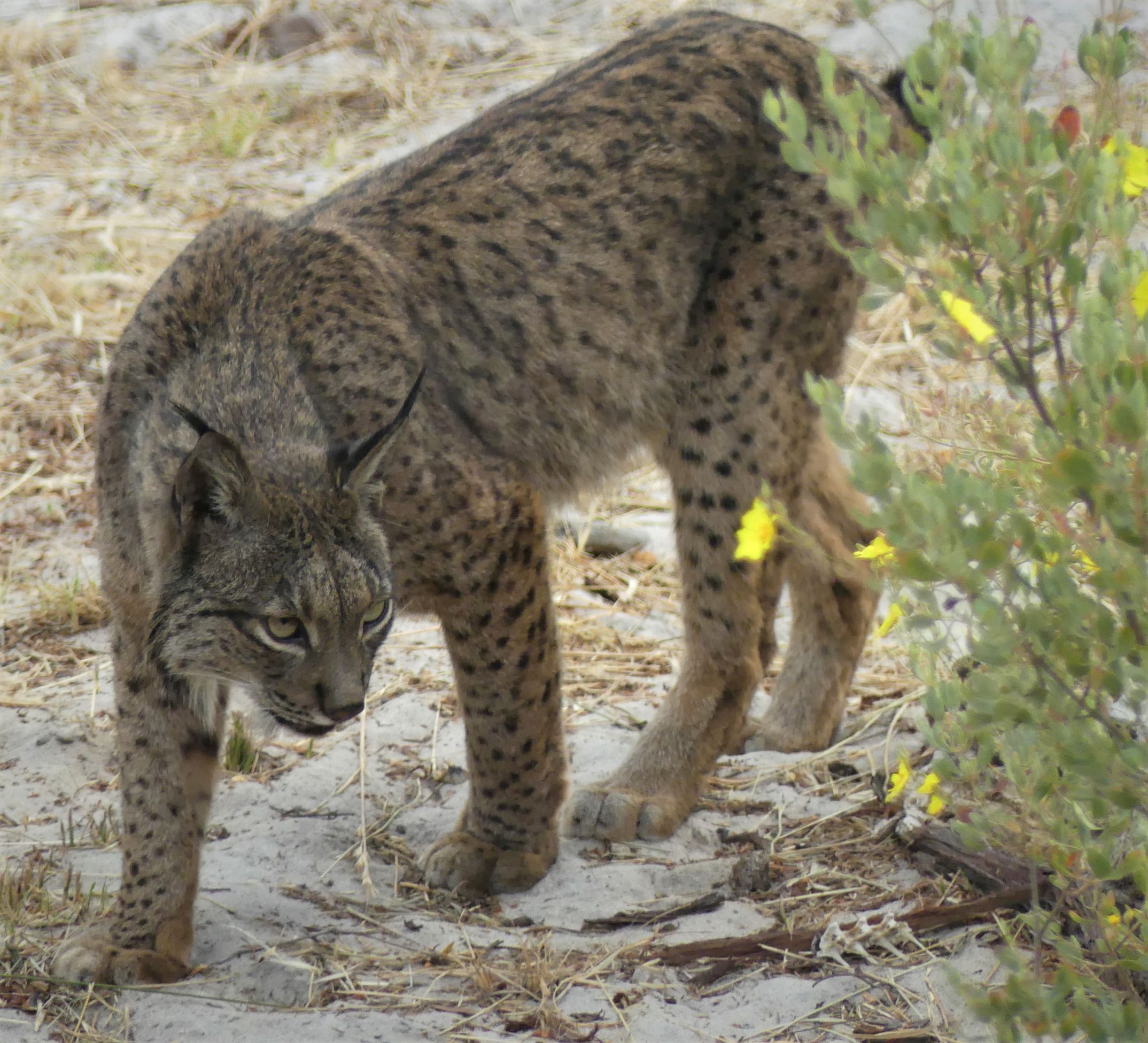
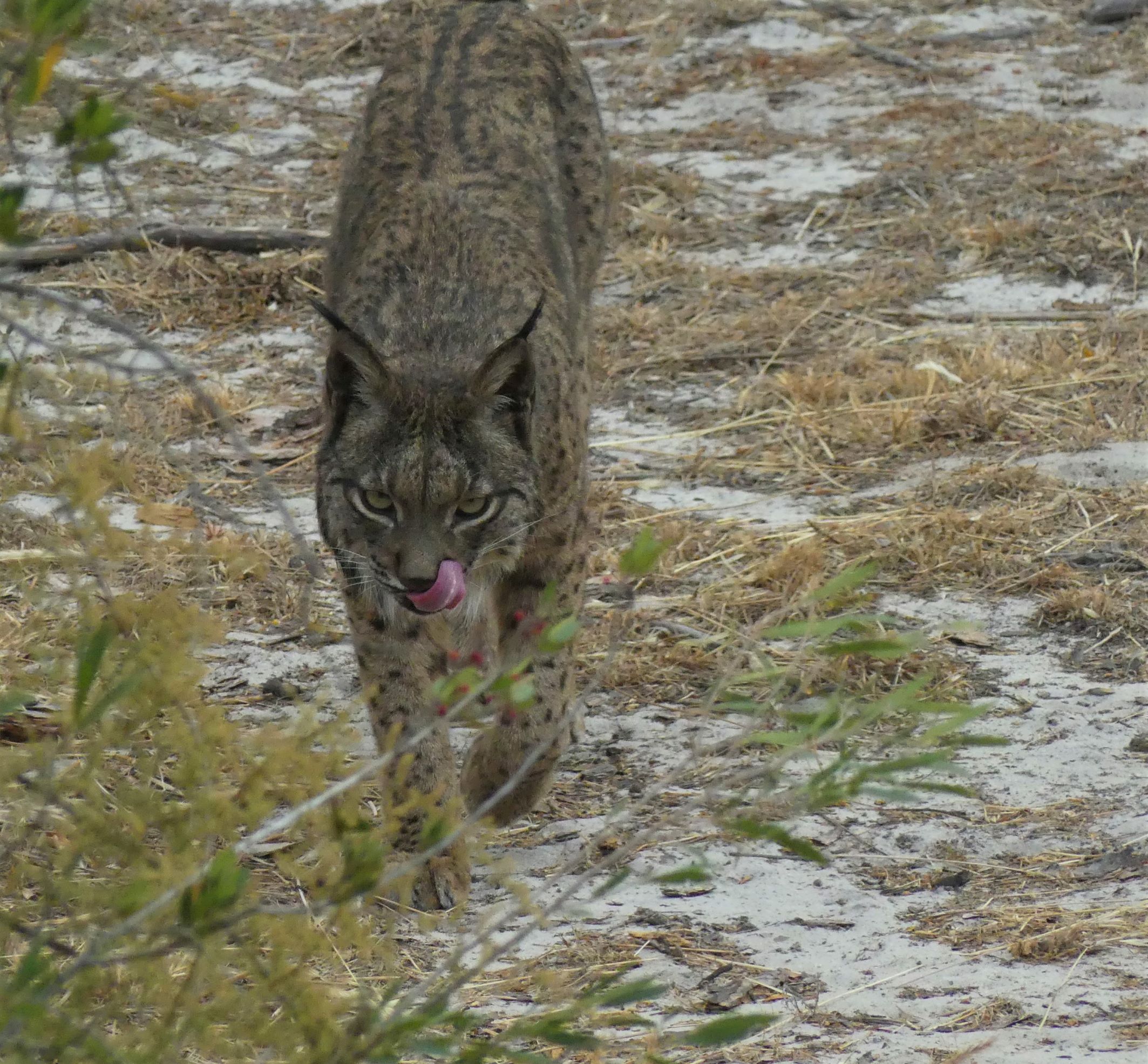
A conservation success story
Tours of the centre are free (although you have to book in advance), and our wonderful guide, Cynthia took us around the centre. She explained how several of the last remaining Lynx had been brought to Doñana in a desperate effort to set up a captive breeding programme, in ‘controlled’ environments. The cubs, closely monitored, when they become sufficiently able hunters, would then be released back into their natural habitat.
Despite the great challenges facing the project, this initiative has proved to be a massive conservation success story, with the Lynx population recovering to around 600 individuals, released into suitable habitat in the National Park, in the Sierra Morena to the North, and now in Southern Portugal. Cynthia explained how the Lynx use their habitat and how rabbit populations are being assisted with the use of ‘rabbit hotels’ – piles of wood, in reality, used as shelter by the rodents, dotted throughout the landscape.
Meeting Felix
The tour ended when we got to meet Felix, a Lynx now deemed too old for release, but still a magnificent specimen. We watched in awe as he padded around his ‘controlled habitat’. Cynthia’s passion, and Felix’s spectacular presence, made for an inspiring, hope-filled morning. One that demonstrates that when people come together to work with nature, it can recover, even from the most desperate of circumstances. The Iberian Lynx remains highly endangered, and the threats facing the cat remain, however, for the time being, the future of the Iberian Lynx is looking positive.
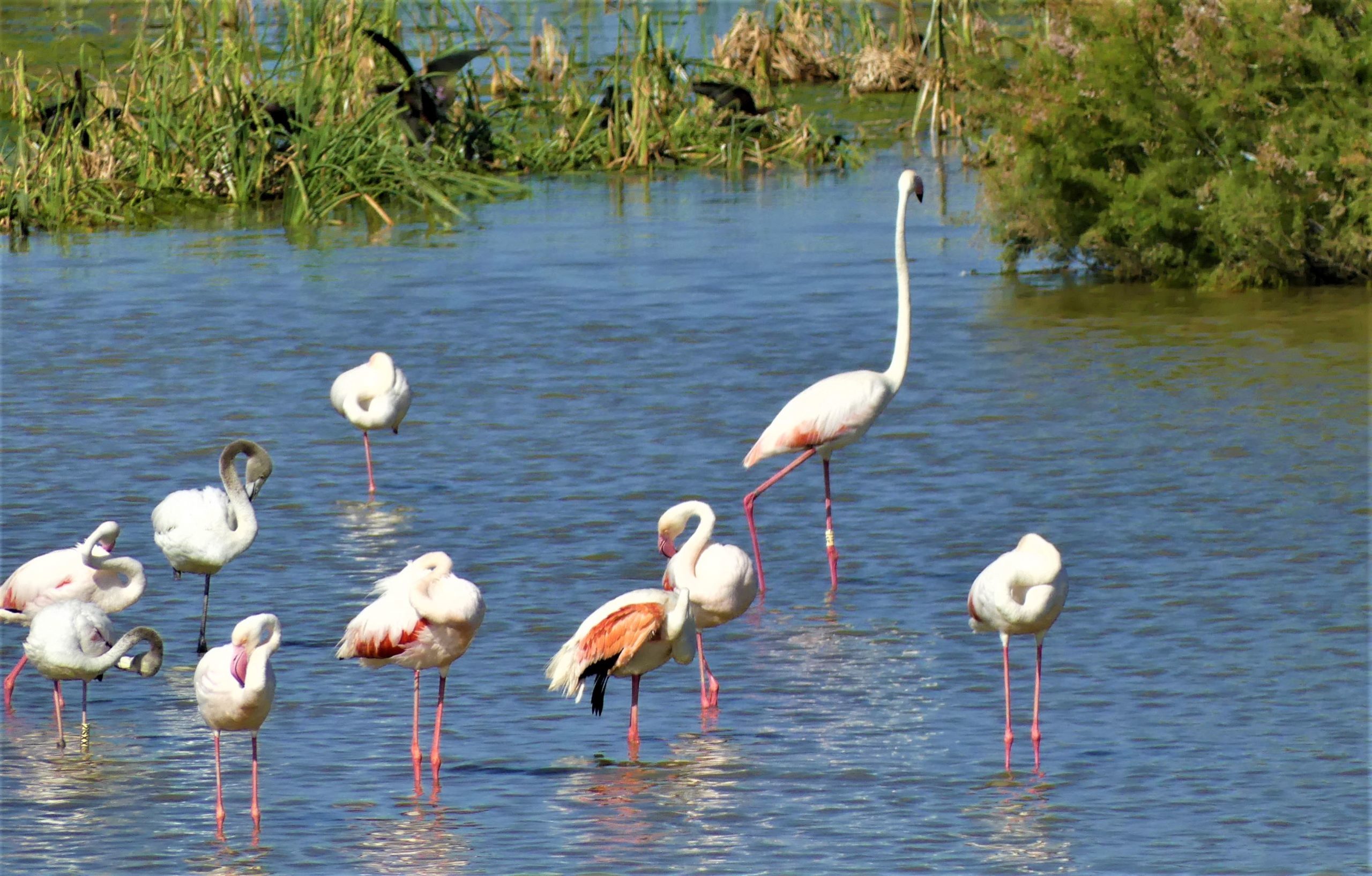
Marismas del Rocio
On the way back from Acebuche, we stopped at the visitor centre of La Rocina, a fine area of marshes, lakes, and forests that lead into the Marismas del Rocίo. There are several hides here, so it’s an ideal place to observe the abundance of waterbirds that call this landscape home. Although being one of the most strictly protected areas in Europe, with large sections of the preserve off-limits to all but guided tours, Doñana still faces numerous threats.
The threat of climate change and agriculture
Climate change, the drying out of the park’s wetlands due to excessive water use upstream for agriculture, toxic waste spills from mines (one of which almost devastated the park in 1998, when a dam at the Los Frailes mine collapsed, poisoning the Guadiamar River), and the constant threat of mass tourism development in the less protected ‘Natural Park’ areas of Doñana, all remain. Also, although the National Park and its less protected ‘buffer’ zones cover over 1000km², this area on its own is not large enough to harbour ‘self-sustaining’ populations of Lynx and other wide-ranging predators, such as the rare Spanish Imperial Eagle, in the long term. These animals require extensive home ranges, and solutions must be found to help connect this park to other wild landscapes.
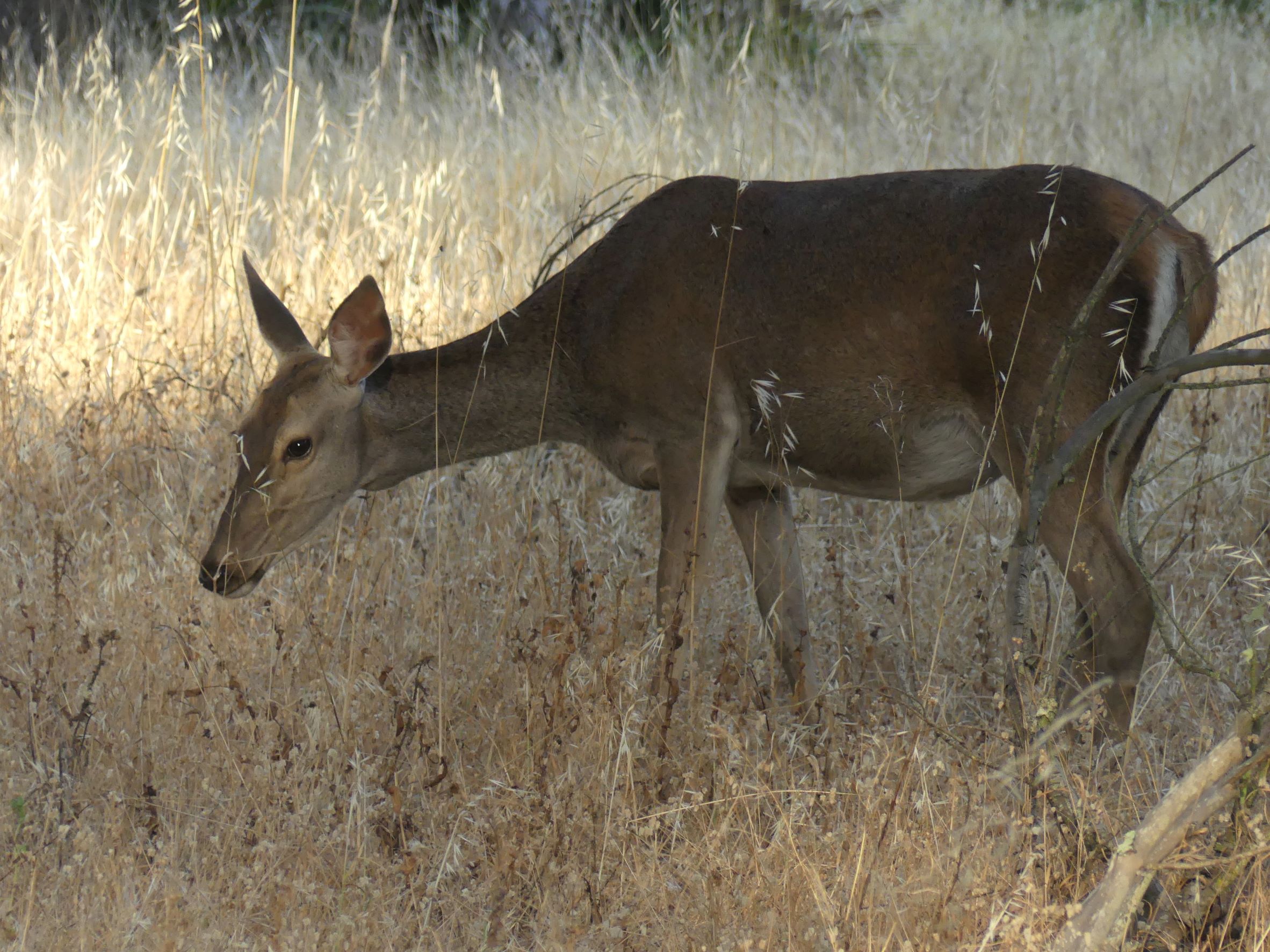

A spanish safari
On our final morning in the park, we headed out in a raised all terrain bus, with a guide, into the strictly protected zone in the north of the reserve, near El Rocίo. This probably was the closest I’ve been to a ‘safari’ experience in Spain. Although this can’t be compared to the African savanna, our guide was excellent, pointing out Spanish red deer, snakes, booted eagles, griffon vultures, storks, and a plethora of other birdlife.
More than 300 species of birds are regularly seen in the protected area, both residents and migrants, which use Doñana as a vital stopover on their route between Europe and Africa. We stopped at a magnificent visitor centre, overlooking a lake bursting with flamingos, Ibis, purple herons, stilts, and purple swamp-hens, strutting through the shallows. It was a lovely way to end an inspiring weekend in one of Spain’s wildest corners, an Iberian success story, but one that is very much threatened by the destructive forces humans are imposing on our planet’s natural systems.
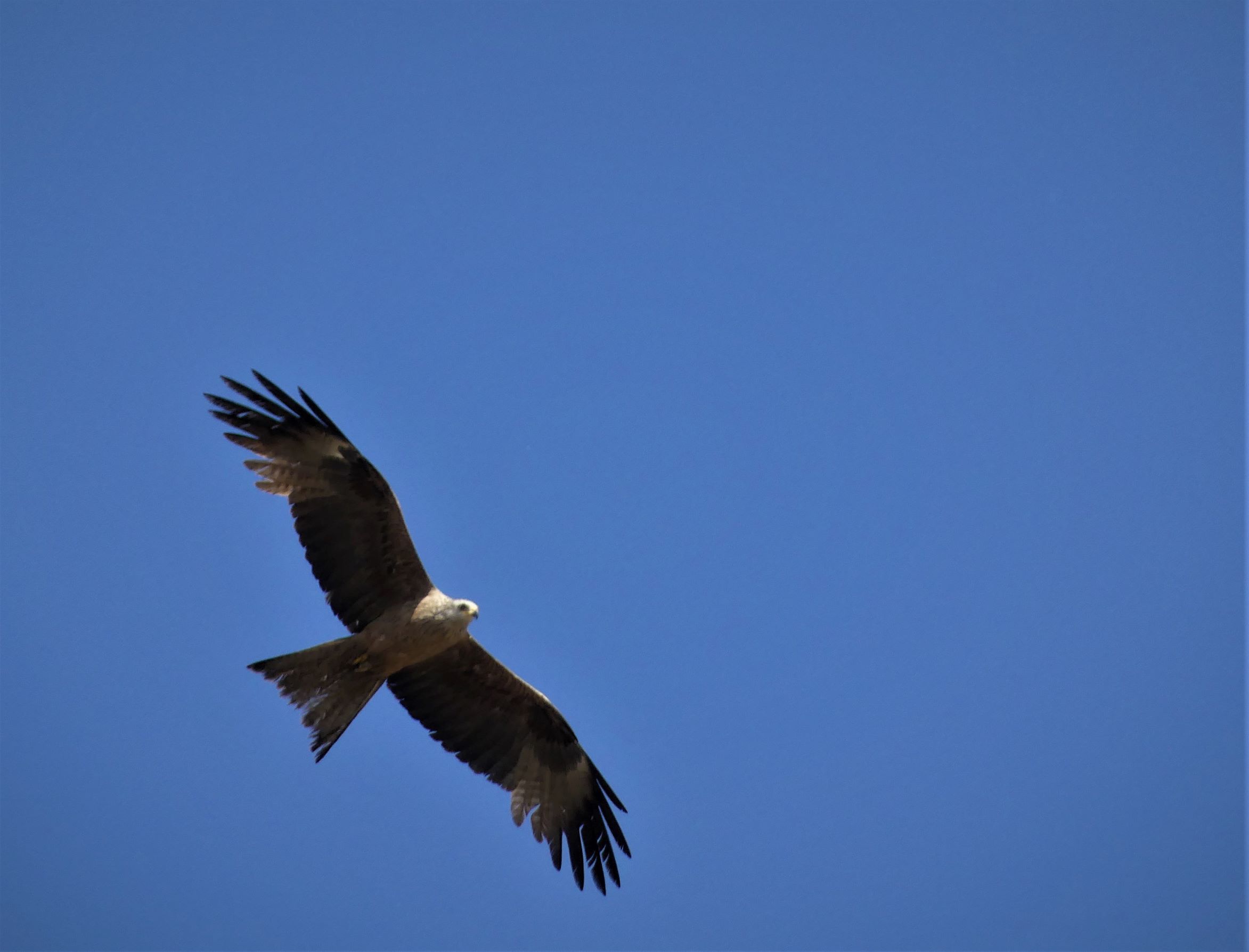
The future…
Can Doñana be the inspiration and template for the restoration and protection of the wild, of a new relationship between our species and the creatures we share our planet with and depend on? Or is Doñana doomed to be a final refuge for nature in an increasingly toxic and uninhabitable world, a future of mass extinctions, where even our own survival as a species is in serious doubt?
Our decisions as a society will determine whether the future is one of hope and rejuvenation or despair and destruction.
For more articles on conservation visit:
Bardia’s Community Conservation Heroes – The Lacandongringo
The Lion’s roar – one night on the Serengeti – The Lacandongringo
Saving the best for last: giant otters of Manu National Park – The Lacandongringo
Hope and devastation. A Story of Borneo’s Orangutans – The Lacandongringo
INTO THE GRIFFON’S WORLD – THE SIERRA DE CASTRIL – The Lacandongringo
About Iberian Lynx conservation:
Iberlince – Lince Ibérico – Project
Conserving The Iberian Lynx – The European Nature Trust
CV El Acebuche El Acebuche – Doñana Visitas (donanavisitas.es)
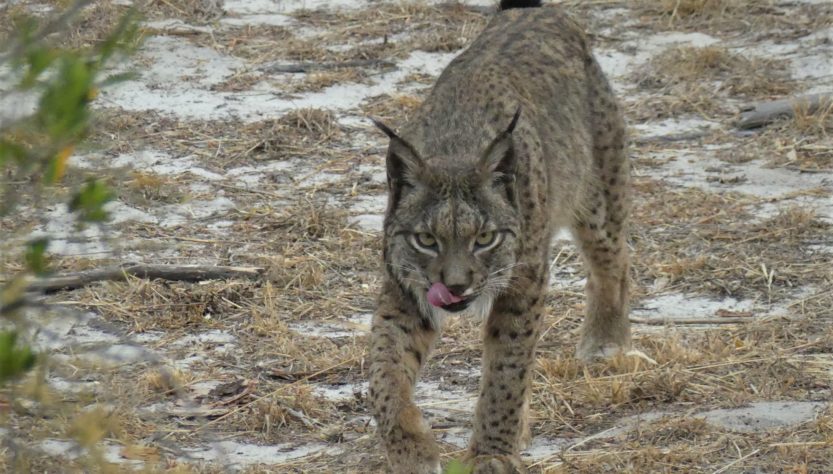
Thanks so much, Steve, for this outstanding article! Thaks for your gripping words to me, my land and my work. I hope see you again when you turn up in Doñana!
Many thanks for your comment Cynthia. The work you and your colleagues are doing is truly inspirational. I look forwards to seeing you again soon in Doñana!